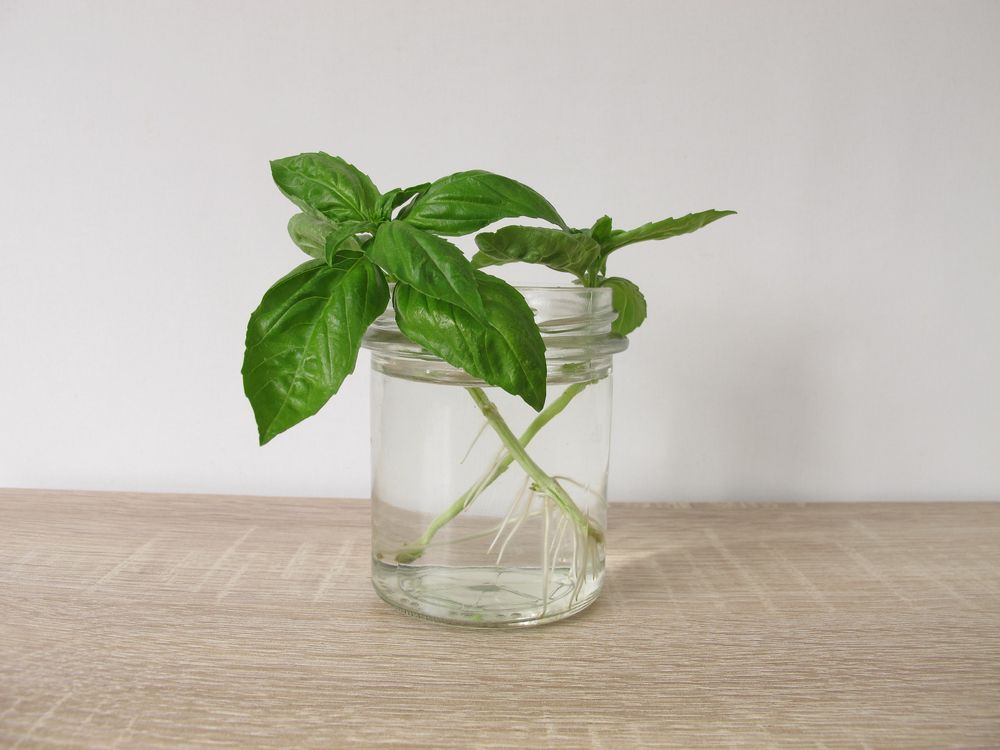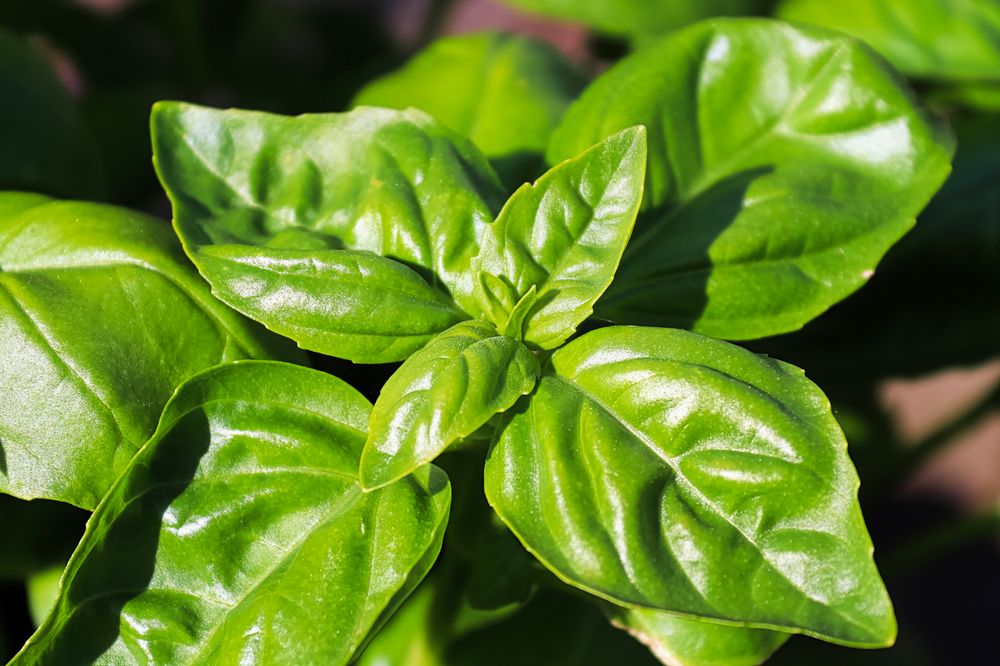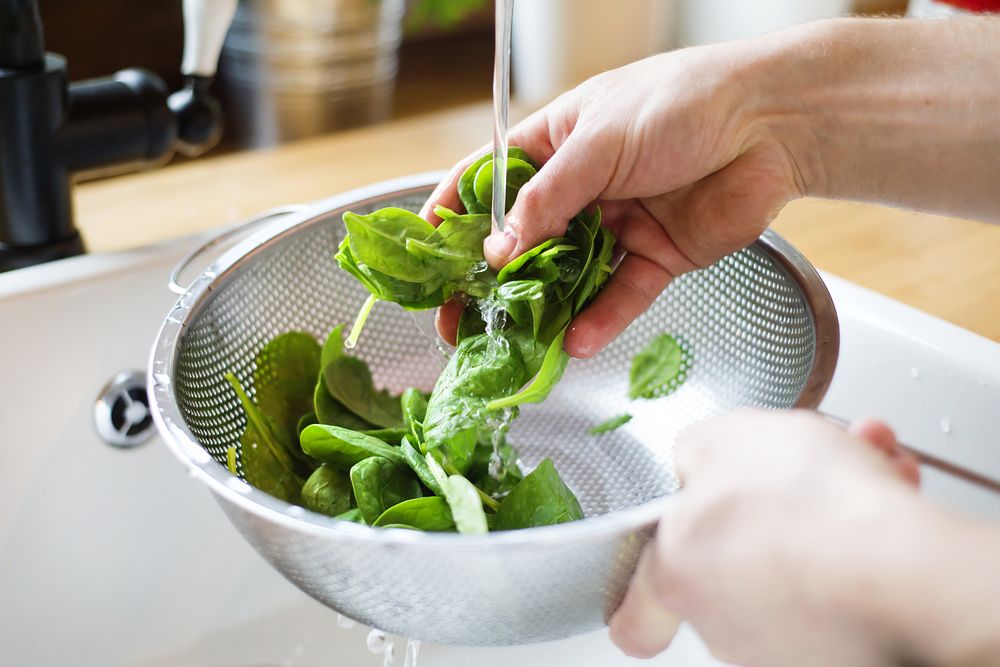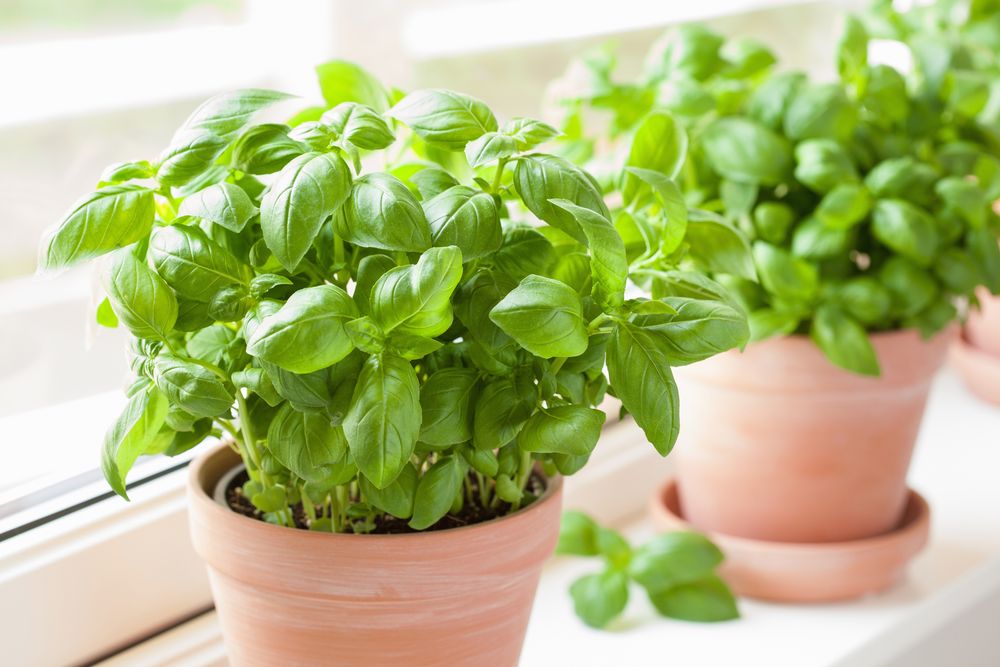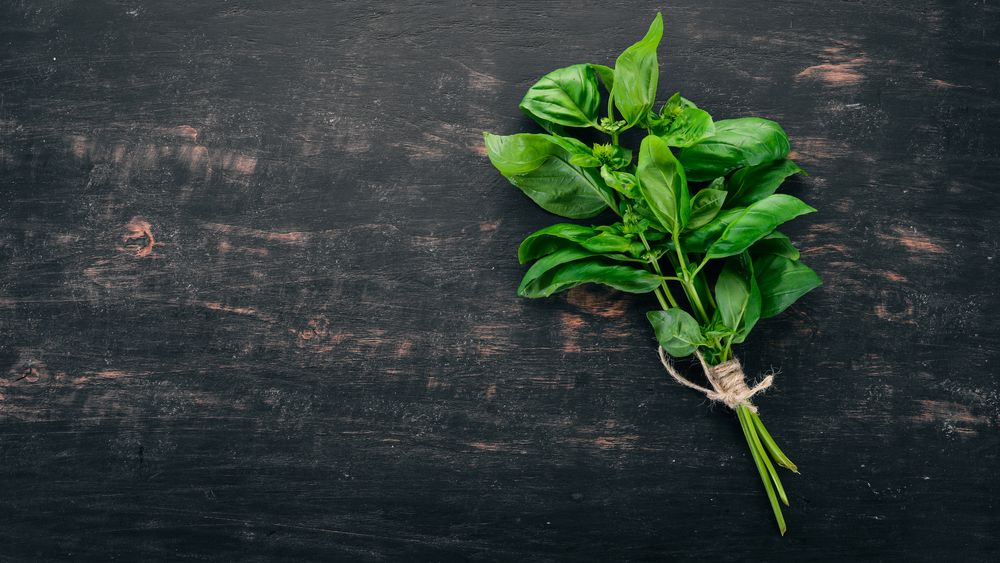How to Store Basil: Easy Tips and Tricks to Enjoy Fresh Basil for Weeks
If you love the taste and smell of fresh basil, you have probably noticed that it only lasts a few days before going bad. But with our simple tips and tricks, you can keep your basil fresh for weeks.
Basil is a plant commonly used in cooking, thanks to its aromatic nature. There are many types of basil, with different sizes and aromas, and all of them can be used for culinary purposes.
The plant has an earthy taste and smell, although some varieties have citrus or pine notes. It also has an intense color that ranges from light green to dark purple. You can easily grow basil at home.
If you’re wondering how to store basil correctly, we’re here to give you a helping hand. Keep reading to discover the best ways for preserving fresh and dry basil, together with additional tips and tricks.
Table of Contents
Basil Leaves: What You Need to Know
You can use basil leaves in many dishes, thanks to their unique flavor, whether you prefer them fresh or dried. Here are some examples of culinary uses that include basil leaves:
- It’s a popular ingredient in Italian cuisine. In fact, tomatoes and basil are a classic Italian pairing.
- You can use basil leaves in salads or as an essential ingredient for pesto sauce when combining it with garlic, pinenuts, and fresh cheese.
- Basil adds flavor to rice while keeping it moist; it also helps digestion due to its strong flavor and aroma. Some people practice it by eating plain white rice for dinner every day, like the Japanese (the dish is called Katsudon).
- You can pair basil with meats such as beef or pork to produce an excellent taste and provide various health benefits due to the nutritional properties of each food type. Health professionals take advantage of this to help improve patients’ appetite.
- Prepare a tea with dried basil leaves and drink it hot to benefit from its cooling effects on the body. You might not like its flavor at first because of its intense earthy taste, but you will eventually get used to it if you keep drinking the tea daily – it’s an acquired taste, after all.
Health Benefits
Basil is rich in vitamins A and C, as well as iron and calcium. It also provides health benefits for the hair, skin, bones, heart, kidneys, liver, and immune system. Furthermore, it can help treat several conditions:
- Sinus infection – Use basil essential oil to relieve congestion and other symptoms caused by sinusitis or common colds.
- Stomach ulcer – Basil helps heal stomach ulcers without leaving scars. Its antiseptic properties can reduce inflammation and provide pain relief. To get its benefits, drink a mixture of dried basil leaves in hot water three times a day.
- Diarrhea – Use basil leaves to make a tea rich in tannin, an antioxidant that helps fight diarrhea-related infections and reduces internal toxins that give you bad breath. You can also chew raw basil leaves or make a paste out of chopped ones and add them to your meals.
- Antimicrobial activity – Basil has powerful antimicrobial properties that can help stop the growth of bacteria and inhibit yeast infections, among other conditions.
- Antioxidant activity – Basil is rich in antioxidants that can scavenge harmful free radicals, slow down the aging process, keep healthy cells strong, prevent cell mutations, and ultimately prevent cancer.
- Common cold – Basil oils help break up congestion; drinking a tea made with dried basil leaves can also help fight symptoms caused by colds.
How to Store Basil
Check out the following tips and tricks for storing fresh and dried basil.
How to Store Fresh Basil
- If you have bought fresh basil from the store, it probably came packed in a plastic bag. Feel free to place it in the fridge as it is, without washing the basil beforehand.
- You can store fresh basil in the fridge for up to 1 week and bring its leaves back to life by putting them in a glass of water.
- Cut the basil leaves, place them in a glass of water, and keep them stored at room temperature without covering them.
- Alternatively, you can cover the glass with a plastic bag and move it to the fridge. This method should maintain freshness for 1 to 2 weeks.
- You can also wash the basil leaves, allow them enough time to dry thoroughly, then keep them stored in the refrigerator in a damp paper towel or an airtight container.
- When storing basil in the refrigerator, remembers to always place them on the bottom shelf (also known as the vegetable drawer) since the temperature is lower.
How to Store Dry Basil
Although it doesn’t have the same amazing flavor as fresh basil, dry basil is more convenient to use. Here’s what you need to know:
- Dried basil can be preserved indefinitely as long as you keep it away from moisture and heat.
- The best way to store dried basil is in an airtight container placed in a cool and dark place with a relatively stable temperature (like a cabinet or drawer) for up to 6 months.
- You can keep it longer by moving it to the freezer. Just put the container of dried basil inside your freezer overnight, then put it back on the shelf at room temperature. Do this periodically – about once every 3 months – and you should be able to extend its lifespan up to 1 year.
Cooking with Dry Basil
Don’t forget that dry basil has a stronger flavor than fresh basil; therefore, you don’t need as much of its leaves when cooking or baking with them.
When using dried basil leaves in your cooking or baking, crush them first with your fingers for better flavor.
To get the most out of dried basil’s great qualities, use it in tomato and olive oil dishes. Basil belongs to the mint family, which means that they have similar characteristics, so it is easy to substitute them.
Can You Freeze Basil?
Yes, it’s possible to freeze fresh basil leaves so that they will last longer.
How to Freeze Fresh Basil
The most effective way for freezing basil is by using the blanching technique. Here’s what you need to do:
- Prepare a bowl of ice-cold water.
- Rinse the fresh basil leaves under cold running water to remove all dirt.
- Set a pot of water to boil.
- Prepare a stainless steel colander with a long handle that’s small enough to fit the pot.
- Place the basil leaves inside the colander, submerge the colander in the pot of boiling water, hold it for 5 seconds, and quickly remove the colander.
- Transfer the hot basil leaves to the bowl of ice-cold water and keep them submerged for 5 seconds.
- Drain the basil leaves and allow them time to dry. You can also use the colander for this part.
- While waiting, line a baking sheet with parchment paper; it should be large enough to hold a single layer of all basil leaves without touching each other but small enough to fit your freezer.
- Once the leaves are dry, arrange them on the baking sheet before inserting the tray in the freezer for about 2 hours.
- Move the frozen leaves to resealable freezer bags, label them, and put them back in the freezer.
It might be necessary to clear out some space in your freezer since they may get really thick after several months of storage. Furthermore, do not be alarmed when you see ice crystals forming on the leaves since it’s normal during the thawing process of cooking.
How to Dry Basil
If you want to dry your basil leaves, there are a few things you need to keep in mind:
- Always choose freshly picked leaves that have no blemishes or stains. Otherwise, they will make your dried basil taste rancid.
- Rinse the leaves in cold water and pat them dry with a paper towel, ensuring they are completely dry.
- Dry the basil in a warm and dark place with good ventilation to prevent it from molding or rotting.
- Once dried, use a mortar and pestle to crumble the dry basil leaves.
- You can then transfer the dry basil to airtight containers, such as spice jars, and keep them stored in your pantry. It’s best to consume it after 6 months at most. So be sure to label the jars and mention the expiration date.
Using the Oven
The oven is the fastest way to dry fresh basil leaves. Plus, you don’t need any special equipment like a food dehydrator. However, you need to be extra careful since there’s always the risk of burning the basil if left for too long. Here’s what you need to do:
- Preheat the oven to the lowest temperature setting – it’s usually between 170 and 180 degrees Fahrenheit.
- While waiting, line a baking sheet with parchment paper.
- Place the fresh basil leaves on the tray in a single layer while ensuring they do not touch each other.
- If you are using just one baking sheet, place it in the middle part of the oven.
- The oven should dry the basil leaves in 1 hour to 1 hour and 30 minutes – it depends on your oven, so make sure to check it regularly.
Using a Dehydrator
A dehydrator is safer to use than an oven because there’s a lower risk of burning. But it takes longer and you still have to frequently check the dehydration process. Here are the steps involved:
- Line the dehydrator racks with parchment paper.
- Arrange the basil leaves in a single layer, making sure they are not overlapping.
- Similar to the oven method, set the dehydrator to the lowest setting – it’s typically between 115 and 120 degrees Fahrenheit.
- Let the dehydrator run for 4 to 10 hours (depending on the temperature setting).
- Check the drying process every hour.
Air-Drying
Air-drying is the natural way of producing dry basil leaves, without having to involve any household appliances. Plus, you will completely eliminate the risk of burning. On the other hand, it’s a painfully slow process since it usually requires between 4 and 5 weeks. And you must meet the temperature conditions.
To air-dry basil, hang the plants by their stems upside down and keep them stored in a dark place with good ventilation. For example, you can use strings from raffia products for this purpose.
If it’s not sunny outside or if you are dealing with indoor plants, consider placing the basil on top of your refrigerator where they will receive plenty of heat from the appliance. Keep checking the basil every day for freshness.
Basil Storage FAQ
Learn more information about storing basil properly.
How to keep basil fresh?
You can keep basil fresh by storing it in a cool and dark place with good ventilation. It’s also good to keep the stems hydrated by rinsing them in cold water every few days. If you’re not going to use the basil within a week, chop off the top of the stem and put it in a glass of water.
How to cut basil?
Make sure to use a sharp knife when cutting basil leaves. And never chop the leaves more than 1 hour before you prepare them since they might lose their freshness quickly.
What to do with basil?
Basil is a widely popular cooking ingredient that enhances the flavor of lots of dishes. It’s either added as a seasoning or blended into sauces, dressings, dips, and pestos.
Is basil water good for you?
Yes. Basil water is composed of fresh basil leaves soaked in water. It’s often used as a refreshing beverage with an invigorating flavor. And the antioxidants found in this drink may help boost cardiovascular health, detoxify your body, and protect against some cancers.
How do I stop basil leaves from turning brown?
You can prevent basil wilting by keeping it in an airtight container, submerged underwater for about 1 hour, or sprinkled with lemon juice.
Final Thoughts on Storing Basil
The proper storage method will keep your basil fresh, but it won’t last more than a few days if you don’t use it quickly enough. Furthermore, air-drying or dehydrating it is the best way to preserve its nutrients and flavor. So if you are dealing with an abundance of basil, freezing is another good option.
What are your secret tips and tricks for storing basil? Share your thoughts with us in the comment area below.
